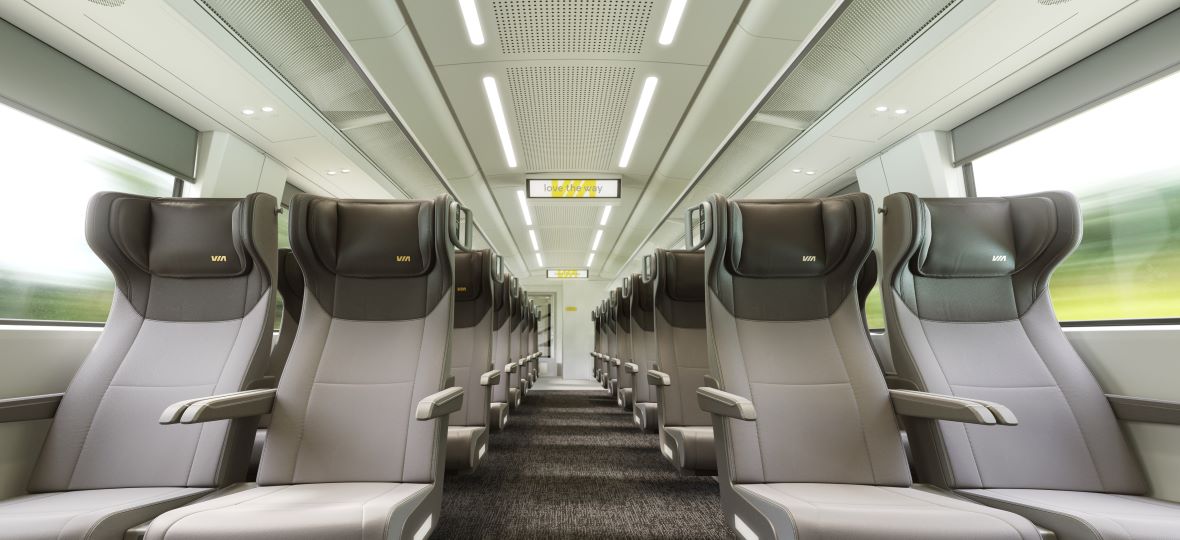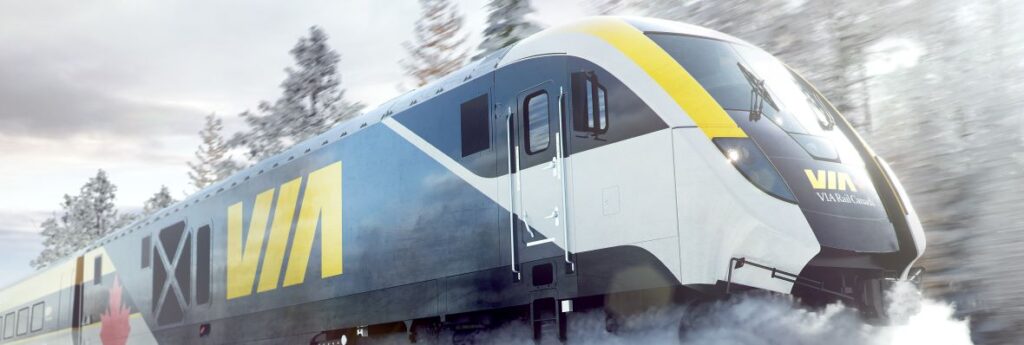VIA Rail Canada has introduced the first trainset of its state-of-the-art new fleet that will serve the Québec City-Windsor corridor beginning late next year. Unveiled in Ottawa, the train is the first of 32 in VIA’s new corridor fleet, which is part of a federally funded billion-dollar modernization program for the national rail company.
“This new fleet marks a new era for passenger rail service in the Corridor, where we served over 4.7 million passengers in 2019 and which represented 96% of our ridership pre-pandemic,” said VIA Rail President and CEO Cynthia Garneau. “In addition to being one of the most environmentally friendly fleets in North America, this modern new fleet will offer our passengers an unparalleled, barrier-free, and fully accessible travel experience.”
Transport minister Omar Alghabra said, “Canadians have relied on VIA Rail to connect them for years. The new fleet will offer a new era of comfort and efficiency for the workers, families, and tourists who travel on these tracks. By supporting VIA Rail’s large-scale modernization project, we are investing in accessible, reliable, environmentally friendly ways for Canadians to see each other and see their country.”

Key features of the new train include:
• Wider aisles, automatic touchless interior doors, adjustable tray tables, comfortable and ergonomic seats, and high-speed reliable data connection.
• A barrier-free and fully accessible travel experience with onboard wheelchair lifts, five Mobility Aid Spaces (MAS) per trainset, large accessible washrooms, braille, and embossed signage.
• Advanced diesel engines and a bidirectional train configuration that allows for less operating time with the engines running making it one of the most environmentally friendly intercity fleets in North America.
VIA board chair Francoise Bertrand, the chairperson of the Board at VIA Rail says the relevance of sustainable passenger rail is “stronger than ever,” in the face of the global climate crises and VIA’s efforts will allow passengers to travel “more often and more quickly to more destinations.”
Winter trials of the test train will begin this month with the first train expected to go into service in Q4 2022.

